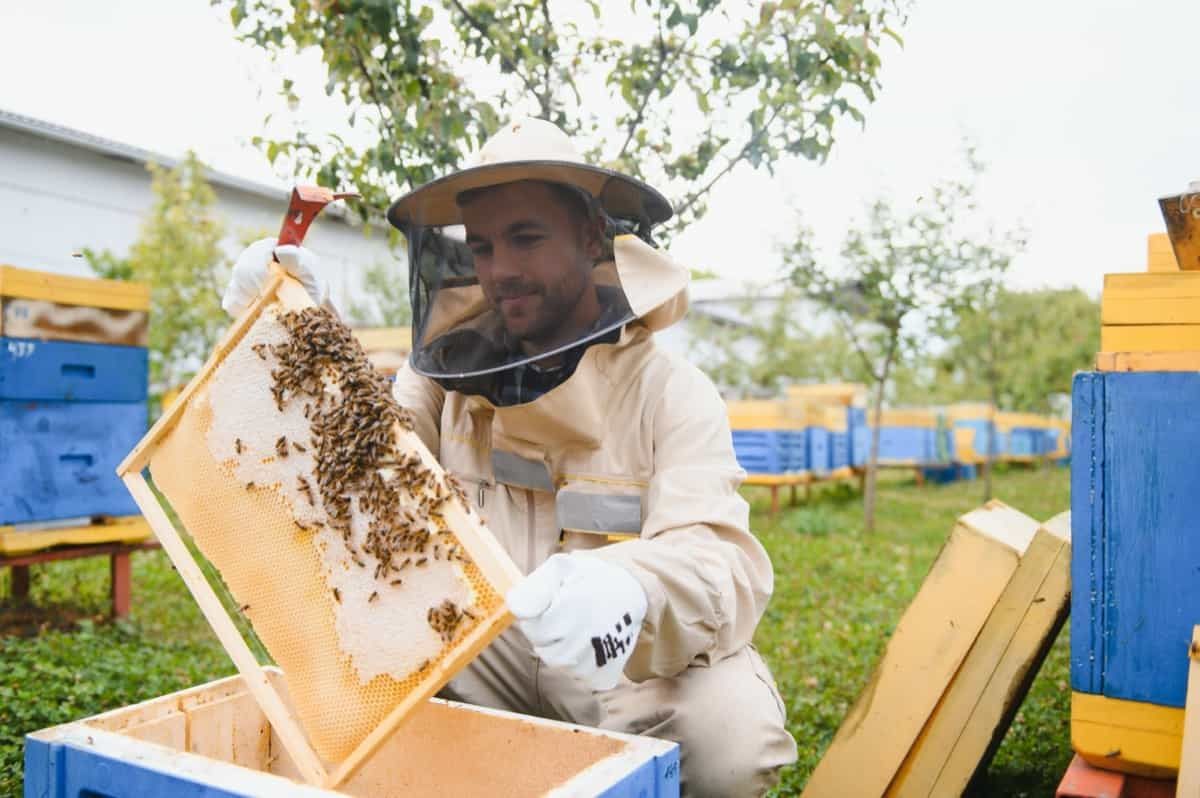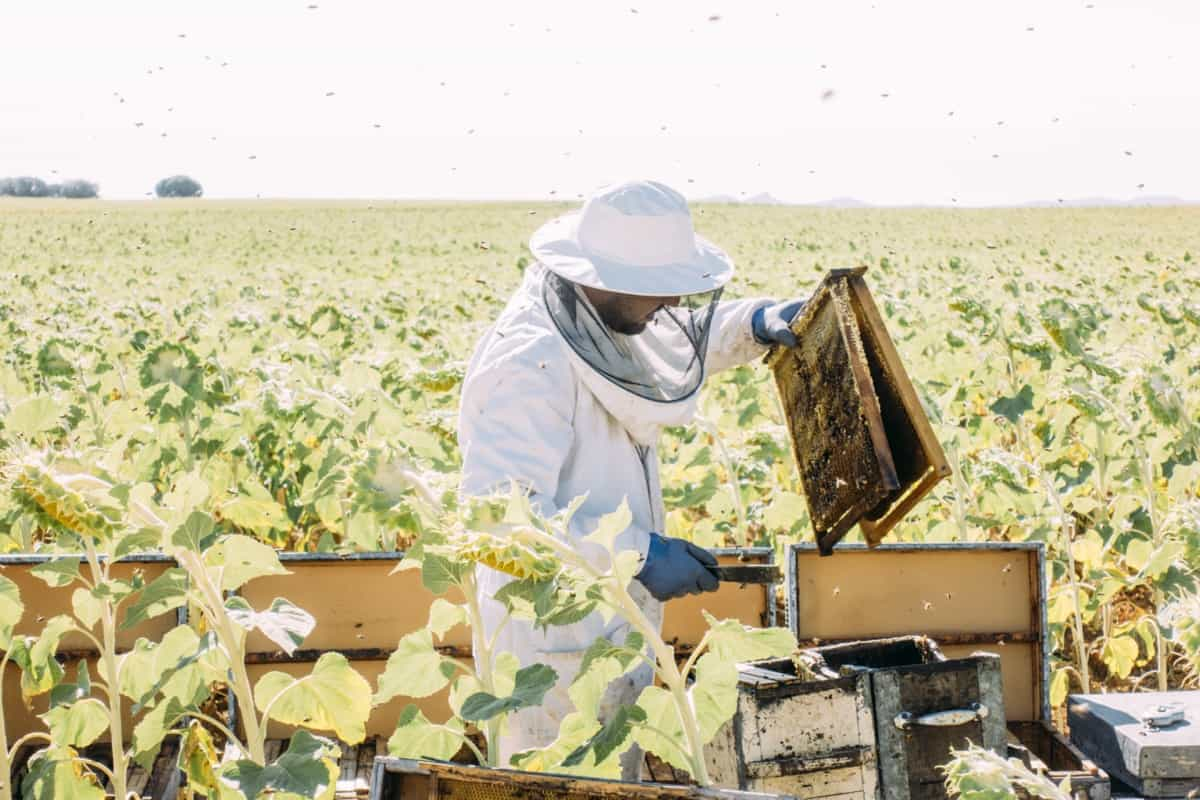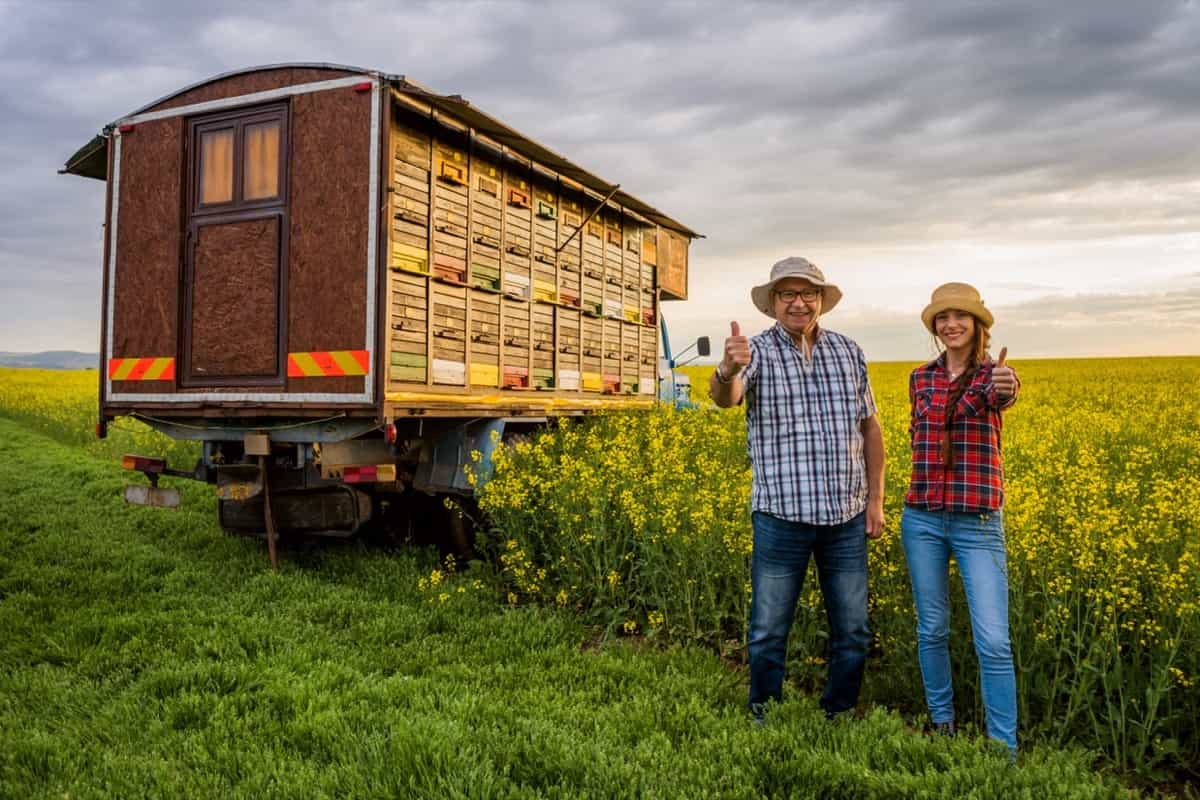Raising bees for pollination has become a crucial aspect of modern agriculture, significantly enhancing crop yield and quality. Honey bees are crucial for pollinating agricultural crops, which is essential for their reproduction. Known as bee pollination, this natural mechanism is essential for maintaining the diversity and productivity of ecosystems.

Honey bees play a crucial role in environmental health, not limited to honey production, but encompassing the maintenance of ecological balance. Understanding the importance of honey bees in agriculture and recognizing bees as pollinators of agricultural crops highlights their critical function in supporting food systems worldwide.
Importance of Bee Pollination
The importance of bee pollination in agriculture cannot be overstated. Honey bees, through their pollination activities, significantly impact the quality and quantity of crop yields. This effect of bee pollination on crop yield is evident in various fruits, vegetables, and nuts, all of which rely heavily on bees for successful pollination.
Pollination by honey bees is called entomophily, and it ensures the transfer of pollen from one flower to another, leading to fertilization and fruit production. The crucial role of honey bees in pollination is essential for both natural environments and agriculture, underscoring the importance of prioritizing their conservation and safeguarding for farmers and environmental advocates.
Types of Bees Used for Pollination
Various types of bees are utilized for pollination, each with unique characteristics and roles. The most well-known are honey bees, renowned for their efficiency and floral fidelity, making them ideal for pollination. Bumblebees are also used, especially for crops requiring buzz pollination. Additionally, solitary bees like mason bees and leafcutter bees play a significant part in the pollination process. Each type of bee contributes differently to crop pollination by bees, with some specializing in certain crops or flowering plants. Understanding these differences is key to effective beekeeping for pollination.
Beehive Placement and Management
Effective beehive placement and management are essential for maximizing the benefits of bees in pollination. Beehives should be strategically placed near flowering crops to enhance accessibility and reduce the travel distance for bees. This proximity boosts the effectiveness of the bees in pollination and increases crop yield.
In case you missed it: How Much Money Do Beekeepers Make: A Comprehensive Analysis of Beekeeping Profits

Proper management involves regular monitoring of hive activity, ensuring adequate food sources are available, and protecting the hives from predators and environmental hazards. Effective management also includes understanding the seasonal patterns and behaviors of bees and tailoring strategies to meet their needs throughout the year.
Creating a Bee-Friendly Environment
Creating a bee-friendly environment is crucial for the health and productivity of bee colonies. This involves cultivating a variety of flowering plants to provide bees with a constant source of nectar and pollen. Ensuring a diverse and pesticide-free environment helps in maintaining bee health and supports their role in pollination. Providing water sources, shelter from extreme weather, and reducing the use of harmful chemicals are also key practices in creating a supportive habitat for bees. Such an environment not only benefits bees but also enhances the overall ecological balance.
Beekeeping Equipment and Tools
Essential beekeeping equipment and tools are required for the successful raising and management of bees. This includes protective gear for beekeepers, such as suits and gloves, to prevent stings during hive inspection and maintenance. Hives, frames, and foundation sheets are fundamental for housing the bee colonies. Other necessary tools include smokers, which calm the bees during inspections, and hive tools for opening and examining hives. Additionally, feeders for supplementing the bees’ diet during scarce periods and extraction equipment for honey harvesting are also important.
Beehive Inspection and Maintenance
Regular beehive inspection and maintenance are vital for the health and productivity of bee colonies. Inspections involve checking for signs of disease, assessing the queen’s health, and ensuring the hive is free from pests. Maintenance includes managing the space within the hive, replacing old combs, and ensuring adequate ventilation. This process helps in identifying and addressing issues early, preventing the spread of diseases and ensuring the wellbeing of the bees. Regular inspection and maintenance are key practices in sustainable beekeeping, ensuring the colonies remain healthy and effective in their pollination role.
Bee Health Management
Bee health management is a critical aspect of beekeeping, especially given the challenges bees face from diseases, pests, and environmental changes. Regular monitoring for signs of illness or distress is essential. Managing bee health involves treating diseases like Varroa mite infestations and preventing the spread of pathogens. Providing a balanced diet and clean water also plays a significant role in maintaining bee health. Ensuring the bees have a stress-free environment, free from excessive disturbances and harmful chemicals, is also crucial for their well-being and effectiveness as pollinators.
In case you missed it: How to Use Fermented Banana Peels as Chicken Feed: Benefits and Preparation Process

Maximizing Pollination Efficiency
In order to optimize pollination efficiency, it is imperative to comprehend and address the unique requirements of bees. This includes selecting the right types of bees for the specific crops being cultivated, as different bees have varying preferences and efficiencies. Ensuring a diverse range of flowering plants in and around the cultivation area provides bees with a steady supply of nectar and pollen, enhancing their health and pollination activity.
Timing is also crucial; aligning the flowering period of crops with the peak activity of bees maximizes pollination. Furthermore, employing practices such as hive rotation and managing bee density can significantly increase the effectiveness of pollination. Monitoring bee activity and adjusting strategies accordingly ensures that pollination is optimized for the best possible crop yield.
Challenges in Raising Bees for Pollination
Raising bees for pollination comes with several challenges. The most pressing issues include the decline in bee populations due to habitat loss, the use of pesticides, and the spread of diseases and parasites like Varroa mites. Climate change presents a notable risk by modifying plant flowering schedules, thereby impacting bee food supply.
Additionally, the lack of genetic diversity in bee populations can lead to increased susceptibility to diseases. Urbanization and agricultural practices that favor monocultures also diminish the natural habitats for bees. These challenges require careful and informed management strategies to ensure the health and sustainability of bee populations.
Best Practices for Sustainable Beekeeping
Sustainable beekeeping involves a holistic approach that considers the health of the bees, the environment, and the agricultural ecosystem as a whole. Best practices include using organic methods to control pests and diseases, thus reducing the reliance on harmful chemicals. Preserving and creating diverse floral landscapes supports a healthier bee diet and strengthens their immune system. Beekeepers should also focus on breeding practices that enhance the genetic diversity and resilience of bee populations. Regular training and education on the latest beekeeping techniques and environmental issues are essential.
Conclusion
Raising bees for pollination is a practice of immense importance, with its benefits extending far beyond the confines of agriculture. While the challenges are significant, ranging from environmental threats to bee health issues, adopting best practices in beekeeping and pollination management can lead to sustainable outcomes.
In case you missed it: Urban Beekeeping in India: Benefits, Regulations, and Opportunities

By enhancing pollination efficiency, addressing the challenges head-on, and adhering to sustainable beekeeping practices, we can ensure the health of bee populations and, by extension, the health of our ecosystems and food systems. The journey towards sustainable beekeeping is not just about preserving bees; it’s about preserving our future.
- Feed Your Flock for Less: Top 10 Tips to Save on Chicken Feed
- Ultimate Guide to Ossabaw Island Hog: Breeding, Raising, Diet, and Care
- Hatching Answers: The Top 10 Reasons Your Chickens Aren’t Laying Eggs
- Eggs and Economics: Breaking Down the Cost of Raising Backyard Chickens
- Defend Your Greens: Proven Methods to Keep Iguanas Out of Your Garden
- Ultimate Guide to Cinnamon Queen Chicken: A Comprehensive Guide for Beginners
- Ultimate Guide to California Tan Chicken: Breeding, Raising, Diet, Egg-Production and Care
- Ultimate Guide to Marsh Daisy Chicken: Breeding, Raising, Diet, and Care
- 10 Types of Chicken Farming Businesses You Can Start for Profits